#margaret corbin
Explore tagged Tumblr posts
Text

Since it'll probably be another month (or two) before Ch. 7 is done, here's a sneak peak.
#liberty's kids#my writing#Sarah Phillips#Margaret Corbin#Captain Molly#amrev#Along the Northern Heights#ATNH
9 notes
·
View notes
Text
orvphil: so real
for example used analysis on the following instances
orville's physical reluctance & difficulty kneeling to propose to jane vs. readily swinging right into such a kneel with phil during 'til we meet again
'til we meet again
(see above) noting the "both immediately becoming So happy to be doing this" and "staring at each other for an unbroken ten seconds after finishing the song which was evidently beyond simply a [hold for applause] thing"
having indeed an adorable little meet-cute, which may not be an integral part of every eventual writer/lyricist & composer partnership
when phil drops in at wingate manor and he an orville have a private little wave to each other like =)
sitting next to each other sharing a hay bale and orville gets drinks for them both and phil walks orville home
lucky day
the choreography where orville's at the piano and phil swings it out while rotating it and orville's "walking" while sitting to one side to help (my analysis: going ohhhhh ;w;)
both simultaneously answering "his" when asked whose song it is like the earnest effortless mutual admiration and appreciation huh fellas
margaret talking about protecting your heart from these theatricals; orville Is one of these theatricals, and he loves it; phil watching him / reacting in this moment including his little "hell yeah" move like he had for orville going off in lucky day
their general enthusiasm together / for each other / enjoyment of being around each other and increased ease of operating when around each other
phil wishing orville could hear his music and talking about how orville ruined his own night to save theirs, then remarking "...what a guy!" mmhm
🌈🌈🌈
#orvphil#summer stock#orville wingate#also everyone was so funny & my god they were dancing & it's so true this show was a delight. i laughed smiled applauded effused enjoyed#shoutout to orville's escaping ''don't do Anything but get married have children'' through theatre; being gay; a little luck#it's so true: william (orville) & veanne (margaret) & gilbert (phil) were all so funny & great individually & in any combo#anthony/tony (montgomery) too lmao his ''....how dare you.'' iconic#shoutout to having orville show up for 1 Sec (in pajamas i believe) for the purposes of villain i have done thy mother. he just lives here#phil is great. trying to hold it together....writer's trick from my momma Use Your Words#and then with orville helping out he can chill out & enjoy his wins & orville can have any wins & enjoy them & chill & Do Things too#and everyone is so cool to him right away. why wouldn't they be. hugging like everybody hey besties#obviously corbin bleu is being his national treasure america's sweetheart leading role & Dancing....all the praises warranted#everyone crushes their role & is a delight. including any little moments w/the ensemble / all Ensembling things. go t.j.#it was great of course & a delight & again the orvphil is extremely real. 100% the textual intention & execution. thanks cheri love you#let's get that summer 2024 show if they can / wanna for real (they want to; let's just see it shake out. summer 2024 is pure speculation)#Oh Nooo if i forgot anything & have to reblog & add to this / rewatch & re/discover any delights
10 notes
·
View notes
Photo

Women in the American Revolution
In Colonial America, women were discouraged from taking an interest in politics and were instead expected to focus only on traditionally 'feminine' matters, such as homemaking and childrearing. However, such gender roles were challenged during the American Revolution (1765-1789), when women played a crucial role in achieving the independence of the United States.
From the very first signs of tension between the Thirteen Colonies and Great Britain, colonial women discovered their political voice. Women were the driving force behind boycotts of British imports, shunning British tea in favor of local herbal substitutes, and holding spinning bees to reduce dependence on British cloth. Female writers, such as Mercy Otis Warren and Phillis Wheatley, helped turn public opinion against British rule, while hundreds of women accompanied the Continental Army to perform essential duties like washing, nursing, and cooking; some women, like Margaret Corbin, Mary Ludwig Hays, and Deborah Sampson, even took up arms and fought against the British. Although women were not viewed as politically equal to men after the war, their involvement proved to be a vital first step in the long struggle for women's rights in the United States.
Role of Women in Colonial America
In October 1608, the 'second supply' of English settlers arrived at the Jamestown Colony of Virginia to supplement the population of original settlers. Among these new arrivals was Thomas Forrest, a gentleman financier, who was accompanied by his wife, a woman listed in the ship's manifest only as 'Mistress Forrest', and her maid, Anne Burras. Mistress Forrest and Anne Burras were the first two English women to settle in Jamestown; Burras would marry later that year and earn the additional distinction of becoming the first English woman to give birth in Virginia. English women continued to sporadically arrive in Jamestown over the course of the next decade until 1619 when the Virginia Company decided to send large groups of women to foster a self-sustaining population. In 1620, 90 single women, many of them from poor families, arrived in Virginia as the first of the so-called Jamestown brides, or 'tobacco brides'. They were married off to Jamestown's male settlers, each of whom paid the Virginia Company a dowry of 120-150 pounds of tobacco. Additional groups of Jamestown brides continued to arrive in the following years.
Faced with this growing population of women, the colonists of Jamestown implemented a gender hierarchy similar to that which existed in England. This revolved around the doctrine of coverture, which stipulated that once a woman was married, she was under the complete authority of her husband and no longer enjoyed an independent legal status. A married woman, or feme covert, was legally considered to be one with her husband; she could no longer own property or sign contracts, and any money she earned belonged to her husband. Once a woman married, she was usually confined to the role of homemaker, devoting her hours to cleaning, cooking, ironing, sewing, and gardening. Divorce was difficult to obtain and was often only permissible if a pre-existing condition rendered the initial marriage invalid. As a result, many colonial women felt anxiety about marriage, with one woman referring to marriage as a 'dark leap' from the familiarity of her parents' house into an unknown future controlled by a man whose personality she may have misjudged (Norton, 42). Still, married life was more desirable than remaining a single woman – or feme sole – for too long, as spinsters were often placed near the bottom of the social hierarchy.
Of course, the status of colonial women varied from colony to colony, and widely depended on social class. Wealthy women, for instance, were usually better educated than lower-class women, as were women from Puritan New England who were often taught how to read in order to study the Bible. But, by and large, women were expected to remain within the 'feminine sphere' and to display only feminine traits such as modesty, cheerfulness, patience, and chastity. They were discouraged from expressing any interest in subjects that were considered masculine, particularly politics; attempts by colonial women to involve themselves in politics were met with punishment, as was the case with Anne Hutchinson, who was banished from Massachusetts in 1637 after challenging the authority of male religious leaders. But, as historian Mary Beth Norton points out, the advent of the American Revolution lent colonial women a political voice for the first time, helping to spark the slow progression of women's rights in the US.
Continue reading...
26 notes
·
View notes
Text
In your opinion, rank Liberty’s Kids characters on who can be trusted the most with a car to who shouldn’t even be 2 inches near the keys.
This question includes characters such as James, Sarah and Henri(I know they’re not old enough to drive yet but pretend they are), Moses, Dr. Franklin, John Adams, Sam Adams, George Washington, Alexander Hamilton, John Laurens, Thomas Jefferson, Abigail Adams, Margaret “Molly” Corbin, Margaret “Peggy” Shippen, Benedict Arnold, Ethan Allen, Nathaniel Greene, Lady Phillips, Major Phillips, Thomas Paine, Paul Revere
12 notes
·
View notes
Text
Corbin Bleu and Stephanie Styles will headline a private industry reading of the Broadway-bound musical comedy, Get Happy. The invitation-only reading will be held on January 17 in New York City. Get Happy, which premiered under the title Summer Stock in 2023 at Connecticut’s esteemed Goodspeed Musicals, features book and additional lyrics by four-time Emmy Award winner Cheri Steinkellner, musical supervision, arrangements and orchestrations by three-time Tony Award winner Doug Besterman, and will be directed and choreographed by Donna Feore, making her long-awaited New York City debut after years of acclaimed work at Canada’s Stratford Festival. Read the reviews for the Goodspeed production here. The producers are Steve Peters and Michael Londra of VenuWorks Theatricals, Greg & Marissa Frankenfield of Excelsior Entertainment, and executive producers Carolyn Rossi Copeland and Nancy Nagel Gibbs. Get Happy is produced by special arrangement with Warner Bros. Theatre Ventures. Bleu and Styles, reuniting after starring opposite each other in the 2019 Broadway revival of Kiss Me, Kate, will play the roles of Joe Ross and Jane Falbury, originally played onscreen by Gene Kelly and Judy Garland. The reading will also feature Stephen Lee Anderson (Broadway: Bright Star, Fiddler on the Roof, Wicked) as Lt. Henry ‘Pop’ Falbury, Gilbert L. Bailey II (Broadway: The Book of Mormon, Beetlejuice) as Phil Filmore, Tony Award nominee Veanne Cox (Broadway: Company; Caroline, or Change; La Cage aux Folles) as Margaret Wingate, Zoe Jensen (Broadway: Six; The Heart of Rock and Roll) as Gloria Falbury, Will Roland (Broadway: Dear Evan Hansen; Be More Chill) as Orville Wingate, and Tony Award nominee Douglas Sills (Broadway: The Scarlet Pimpernel; Little Shop of Horrors; War Paint) as Montgomery Leach, with Nicholas Cunha, Francesca Mancuso, Corinne Munsch, Kaylee Olson, Aaron Patterson, Jack Sippel, and Cayel Tregeagle. When the company of a new Broadway show loses their rehearsal space, the gang hoofs it to a family farm in Connecticut where, in the best musical tradition, the show must go on. Along the way, there are unlikely romances, some of the greatest songs of the American songbook, show-stopping choreography, and a farm – and a musical – to save.
3 notes
·
View notes
Text
Please read: Baby name lists just from google put into one post don't judge need a way to compact this into a document before changing computer I put so much work into this I need it saved
A
Aries
Aylee
Annie
Addelyn
Alexa
Aspen
Ainsley
Adelaide
Amberlyn
Ariella
Ava
Ameilia
Adley
Alabama
Alma
April
Abby/Abigail
Ally/Allison
Ambree
Aurelia
Aurora
Alana
Addison
Arizona
Audrey
Alyssa
Atlanta
Alexandria
Ambrose
Athena
Anastassia
Alice
A
Andrew
Alec
Axel
Asher
Arlo
Atlas
Arrow
Alfie
Atticus
Archer
Ace
Alexander
Austin
Abel
Augustine
Avi
Atlas
Ason
A
Avery
Andie
Ash
August
Atlas
Aero
Aj
Area
Adventure
Ackley
Aster
Apollo
B
Brigette
Bonnie
Bea
Bexley
Bailee
Bristol
Betty
Bay
Billie
Blair
Brixton
Brynn
Berlin
Beverly
Bloom
Brighton
Britain
Beatice
Brooklyn
Brinley
Brexley
B
Brandon
Beck
Beckett
Baker
Brody
Brooke
Brett
Bryce
Benj
Bennet
Braxton
Bradley
Bracken
Bryson
Bowen
Braydon
Bruno
Bryson
Bennett
B
Blake
Bishop
Bailey
Bentley
Bellamy
Blaize
Boston
Brogan
Brantley
Brixton
C
Carolyn
Cynthina
Cora
Cece
Candace
Constance
Clara
Cameriegh
Camrie
Chole
Callie
Cecily
Charlotte
Cassie
Clover
Cordelia
Cheyenne
Clementine
Cecelia
Celeste
Chastity
Cleo
Calla
Cassia
Calliope
Caroline
Carolina
Cheyenne
Charlotte
C
Collin
Charles
Connor
Colton
Callan
Cash
Colt
Cole
Callum
Chase
Cohen
Cooper
Corbin
Cullen
Caesar
Colson
Crew
Chase
Cooper
Cash
Castor
Clay/Clayton
C
Camden
Carter
Caden
Carlan
Camryn
Carson
Chandler
Channing
Cory
Callahan
Cadence
Corbin
D
Della
Daphne
Demi
Dana
December
Davina
Daisy
Dalaney
D
Daniel
Dean
Delcan
Diesel
Derek
Deaco
Damon
Dain
Dalen
Dani
Deven
Dakota
Denver
Drew
Dagen
E
Evie
Evelyn
Everlee
Ella
Emmy
Esme
Emily
Eden
Eleanor
Ellie
Ellis
Elise
Edith
Eve
Ensley
Elizabeth
Edith
Emma
Eliza
Ericka
Erina
Emerald
Emely
Eloise
E
Erza
Eric
Evan
Emory
Edison
Elijah
Edward
Eaton
Elian
E
Everett
Elliot
Eston
Ember
Emmett
Ellison
F
Faith
Flora
Fern
Felicity
Florence
Faye
Fiona
F
Freddie
Finn
Finch
Fox
Forrest
Foster
Falcon
Ford
Felix
F
Frankie
Fenton
Finley
Flynn
G
Gwen
Gabby
Georgie
Georgia
Gemma
German
Gianna
Ginger
Glory
Grace
Gia
G
Gabe
Grey
Graham
Gale
Gavin
Grant
Gannon
Gunner
G
Gabriel
Greyson
Grey
H
Harmony
Hazel
Honnor
Haelynn
Haven
Heidi
Hollis
Hannah
Hadley
Haeley
Hannah
Helena
Harriet
H
Hugo
Harris
Harry
Hayden
Holt
Hunter
Hamilton
Holden
H
Holland
Harlem
Hudson
Hal
Harley
Hartley
Haslett
Huntley
Hurley
Huston
Hunter
Hollow
Huxley
I
Isla
Ivy
Indigo
Iris
Ivory
Ida
Izzy
Isabella
Indie
I
Ian
Israel
I
J
Jane
Joan
June
Jacy
Juniper
Joise
Jenna
Jade
Juliet
Jaclyn
Josephine
Judith
J
Jack
Jaxs
Joseph
James
Justin
Jacob
Jasper
Julius
Jackson
Jonas
Jalen
Joel
Jonah
Judson
Jayden
Jagger
Jett
J
Jamson
Jamie
Jo
Jude
K
Kathleen
Kennedy
Kynzlee
Kaylee
Kora
Kamila
Kamie
Kailani
Kira
Karmen
Kimber
Kate
Kada
Kapri
Kaizlee
Kenley
Kayte
Kingsley
Kaelyn
Kenna
Kacie
Kelsey
Kinsley
Kiwesten
Kaleah
K
Kane
Koa
Kingston
Kole
Kaleeb
Kale
Kash
Kalvin
Karlton
King
Keon
Kruz
Kyler
K
Kai
Kohen
Kameron
Karter
Kasey
Kassidy
Kendall
Kody
Korbyn
Karson
Knox
Krew
L
Lauren
Lily
Laken
Lana
Layla
Lane
Lia
Lila
London
Leighton
Lacy
Lettie
Lydia
Lilac
Layne
Libra
Lexie
Lena
L
Louis
Lee
Leo
Laim
Lucah
Levi
Lux
Ledger
Lincoln
Lathan
Landon
L
Leighton
Lyric
M
Mars
Mary
Mabel
Marie
Mae
Marlow
Maeve
Maddison
Molly
Mila
Maisie
Madeline
Margaret
Miley
Meredith
Mia
Marigold
Mariana
Marlow
Mayven
Macy
Maelie
Magnolia
Madalyn
Marley
Meadow
Mel
Meilani
Maggie
M
Milo
Maverick
Miles
Mathis
Mateo
Matthew
Madden
Malakai
Maddox
M
Memphis
Micah
Morgan
Mason
Max
Maxton
N
Nova
Navy
Norah
Naomi
Natalia
N
Noah
Nico
Nash
Nathan
Nolan
Niles
N
Noel
O
Olive
Oliva
Oaklee
Opal
Ophelia
O
Oscar
Oliver
Otis
Owen
O
Ocean
Oak
P
Penelope
Phoebe
Poppy
Persephone
Peggy
Paige
Paisley
Piper
Pearl
Penny
Paris
Presley
P
Palmer
Porter
P
Phoenix
Parker
Paxton
Pierce
Q
Quinn
Q
Q
R
Remy
Ruth
Ranye
Raelle
Rosie
Raylee
Roselind
Ruby
Rilynn
Reese
Riya
Rainney
Rae-lynn
Rain
Reagan
Renee
Raven
Rose
Ruth
R
Rhett
Reid
Rayson
Romen
Rylan
R
River
Rory
Rowen
Ryder
Ryker
Romeo
Rio
Rome
Reef
Ryland
Royal
Raiden
S
Stella
Space
Sadie
Sutton
Soren
Seattle
Scotlynn
Story
Sage
Sapphire
Savannah
Shiloh
Skye
September
Sual
Sophia
Scarlett
Stephine
Sabrina
S
Stephen
Sillas
Sebastian
Sawyer
Spencer
Shawn
S
Skyler
Samson
Shai
Saylor
Salem
Scout
Storm
Saint
Stellan
Sparrow
Sloan
Shane
T
Tia
Tayliee
Thalia
Teagan
Tallulah
Tinsley
Tara
T
Thomas
Theo
Toby
Tanner
T
Tate
Taylor
Tatum
Timber
Throne
Tristan
U
U
U
V
Victoria
Vanessa
Violet
V
Victor
V
Vale
W
Willow
Willa
Whitney
W
Wyatt
Wilder
Winston
Waylon
Weston
Wesley
W
Wren
Westlynn
X
Xena
X
X
Z
Zoey
Zelda
Z
Zain
Zayden
3 notes
·
View notes
Note
So I would like to make an addendum to my guess for Kitty from about an hour ago. Margaret Cochran Corbin?
And there it is folks. You actually got it. Margaret Cochran Corbin, also known as Molly Pitcher, is indeed the donor for Kitty!
Margaret Corbin was a nurse that accompanied her husband to battle. When he fell in battle, she took up loading and firing his cannon until she was too injured to continue. Actually one of the first women to receive a pension for her military service.
I would have also accepted Mary Ludwig Hays, which you also guessed at in your other ask. Both are potential identities to the 'Molly Pitcher' pseudo tall tale, but I leaned towards Margaret Corbin as she was actually a nurse.
4 notes
·
View notes
Text
Places in New York City that don't look like they're in NYC (and aren't in Central Park*)
Forest Hills Gardens, Queens
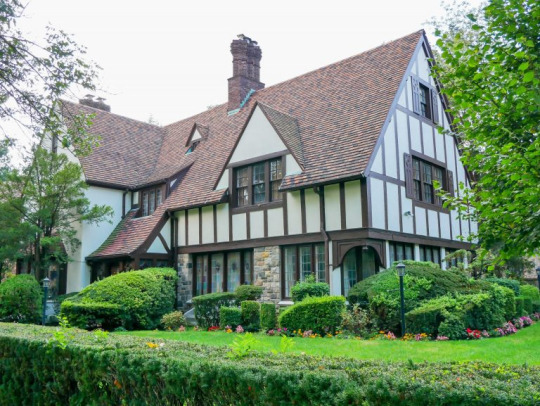
This lovely NYC neighborhood was modeled after an English village back when it was first built in 1910, offering a little piece of the UK in Queens, with quaint Tudor-style houses and a town center with a train station. Read more about it here.
Where: 71st Ave, Forest Hills, NY
The Met Cloisters, Washington Heights
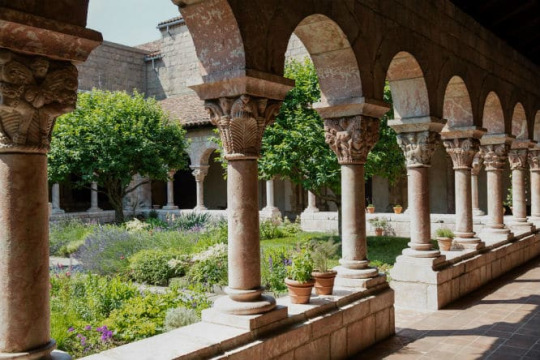
If you didn’t know about The Cloisters before, you might not ever believe that a medieval castle was in the middle of New York City. But it is! The Cloisters is a branch of The Metropolitan Museum of Art that is devoted to European art history. It was designed and constructed taking elements from many different medieval cloisters, which are covered pathways in a church or monastery that connect to form an open square in the center. Find out more here.
Where: 99 Margaret Corbin Drive
Hours: Thursday-Tuesday 10 a.m. – 5 p.m., Closed Wednesdays
Purchase tickets on their website here.
Villa Charlotte Bronte, The Bronx

Italy or the Bronx? The beautiful “Villa Charlotte Bronte” apartments look straight out of Europe. They were built in 1926 and sit along the Palisades, overlooking the Hudson River, in the Spuyten Duyvil neighborhood of The Bronx. The design was actually based on an Italian villa, which definitely makes sense, and includes balconies as well as lush gardens!
Where: 2501 Palisade Ave, The Bronx
Fort Tryon Park, Inwood
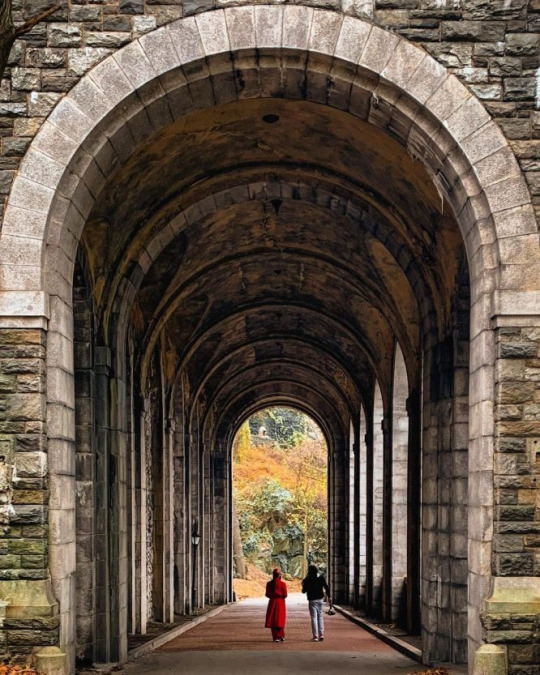
These massive stone arches looks straight out of another era…and that’s because they are! Built between 1901 and 1905, the “Billings Arcade” is some of the last remains of the Tryon Hall mansion, built by wealthy Chicago industrialist Cornelius K. G. Billings. John D. Rockefeller, Jr. purchased the $2 million estate in 1917, only for it to burn down a few years later. Read more about the history from the Fort Tryon Park Trust.
Makes sense that #2 on our list is right next door!
Where: Riverside Dr. To Broadway (arches are near down toward the Billings Lawn, this website has good detailed directions)
Hours: Open daily, 6 a.m. – 1 a.m.
Greenacre Park, Midtown

This hidden little park in Midtown East is only 1/7 of an acre, but it definitely packs a punch. It holds a 25-foot waterfall that is not only a sight for sore eyes in the middle of Manhattan, and will also distract from the noise of the busy streets. It was built in 1971 by the Greenacre Foundation from a design by Hideo Sasaki.
Where: 217 E 51st St.
Hours: Open daily, 8 a.m. – 6 p.m. *Reopens for the season Monday, April 3*
Bonus: Here’s our list of other stunning secret gardens hidden in NYC
Andrew Carnegie Mansion, Upper East Side
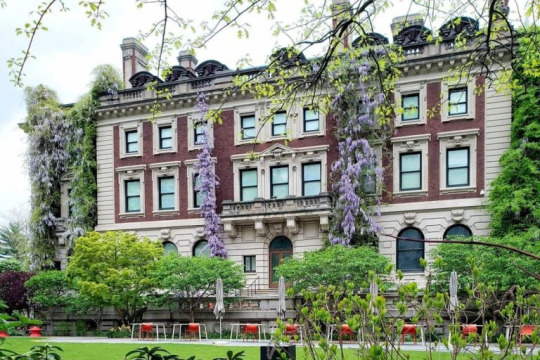
The Andrew Carnegie Mansion is a historical spot now home to the Cooper Hewitt Smithsonian Design Museum. The mansion was originally completed in 1902 and reached landmark status in 1974, though it has undergone much change over the years. The grounds of the mansion, and now museum, feature an expansive garden and cafe for visitors to enjoy as well as a little opulent oasis in the middle of Manhattan.
Where: 2 E. 91st Street
Hours: Thursday–Monday, 9 a.m. – 5 p.m.
Morgan Library, Murray Hill

The Morgan Library feels like a trip to a library from Harry Potter or old world Europe. The historical venue was built as a private library between 1902 and 1906 for financier Pierpont Morgan. He began collecting manuscripts and other historical materials as early as 1890, and now they line the walls of the museum. You can find some of the country’s rarest music manuscripts, early children’s books, Americana, early printed books and more there. Purchase tickets here.
Where: 225 Madison Ave
Hours: Varies, see website for more info
“Little Paris,” Nolita/SoHo
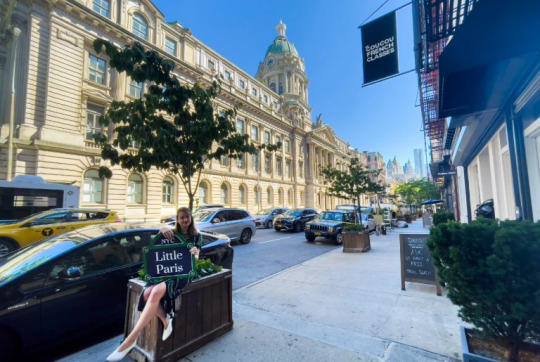
NYC’s own “Little Paris” is the work of one group of French business owners determined to showcase NYC’s own enclave of French culture on Centre Street in Nolita/SoHo (between Broome & Grand St.). Along Centre St. you can find French café and bakery Maman, wine bar La Compagnie des Vins Surnaturels, and art and home decor shop Clic. To complete the Parisian vibe is the old police headquarters located across the street from Coucou French Classes, whose architecture was inspired by Paris’s famous Hotel de Ville (City Hall) with its Beaux Arts style. Read more about it here.
Where: Centre Street between Broome & Grand St.https://www.tiktok.com/embed/v2/7107213381651795246
Van Cortlandt House, The Bronx
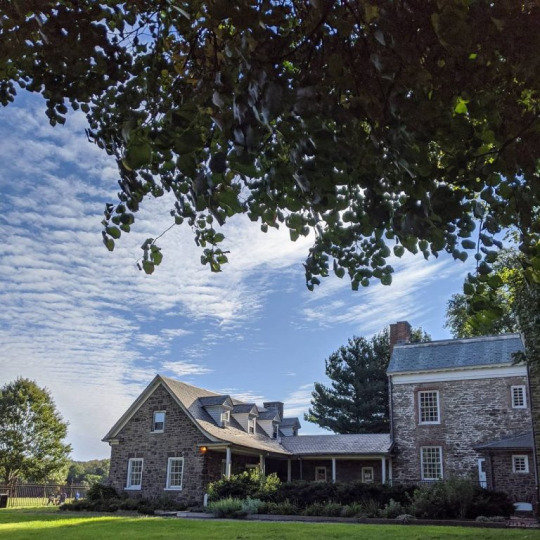
The Van Cortlandt House is the oldest surviving building in The Bronx, and was built by Frederick Van Cortlandt (1699 – 1749) in 1748. The Van Cortlandts were a prominent merchant family who owned a plantation on the property. Generations of the family lived there for 140 years, and in 1887 it was sold to the City of New York and made into public park land (Van Cortlandt Park itself it also the third largest park in NYC and has lots of unique hiking trails and vantage points!). Before it was a museum it had many random, unique uses like a temporary police precinct and a living space for ranch hands that cared for a herd of buffalo on the property.
Where: 6036 Broadway, Van Cortlandt Park
Hours: Varies, see website for more info
Stone Street, Financial District

Stone Street is one of the rare cobblestone streets in NYC, that gives more of an old school European feel to the starkly modern city buildings around it. According to Untapped Cities, the street was one of the first to be paved with cobblestones (in 1658) in the Nieuw Amsterdam colony, which is where it got its name. Today, no cars are allowed through and in the warm weather because of outdoor seating, it’s one of the few NYC locations where drinking is actually allowed in the streets.
Where: From Whitehall St. to Broad St., between Marketfield St. and Bridge St.
Hours: Open 24 hours
Ford Foundation Garden, Midtown

Tucked all the way at the end of 42nd Street (between 2nd Ave. and the United Nations Plaza), the Ford Foundation Center for Social Justice is a true hidden treasure of New York City. With sunlight streaming in on multiple sides, the 160-foot tall atrium holds 39 species of plants. There is also a reflecting pool, and a sensory garden with plant life you are encouraged to touch and smell. Read more here.
Where: 320 E. 43rd St.
Hours: Monday-Friday 8 a.m. – 6 p.m.https://www.instagram.com/reel/ChcXIbcAbpA/embed/?cr=1&v=14&wp=540&rd=https%3A%2F%2Fsecretnyc.co&rp=%2Fextraordinary-places-you-wont-believe-are-in-new-york-city%2F#%7B%22ci%22%3A0%2C%22os%22%3A4699.899999999907%2C%22ls%22%3A3474.899999999907%2C%22le%22%3A3748.600000000093%7D
Jamaica Bay Wildlife Refuge, Queens
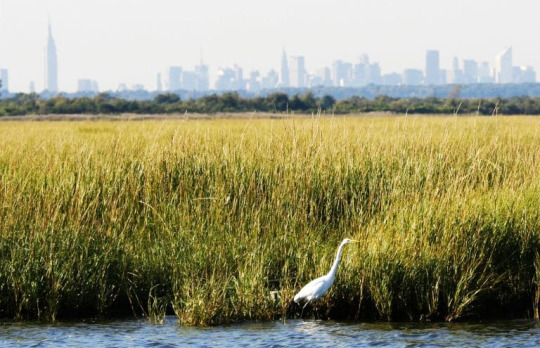
If you’re looking to be surrounded by nature instead of the concrete jungle, the Jamaica Bay Wildlife Refuge is the place for you. On over 9,155 serene acres you can hike, go bird-watching, explore turtle nesting and admire the wide variety of wildflowers, moths and butterflies.
Where: Cross Bay Blvd near Broad Channel, Queens
Hours: Open daily, 6a.m. – 9p.m.
Brooklyn Botanic Garden, Prospect Heights
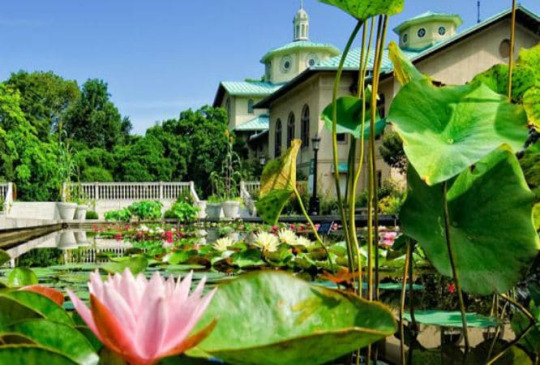
This lush oasis in the heart of Brooklyn will make you feel like you’ve been completely transported to another city. During the cherry blossom bloom in the spring, it will surely feel like a trip to Japan, but year-round it provides a natural haven for New Yorkers with varying blooms all over its very walkable grounds. Purchase tickets on their website here.
Where: 455 Flatbush Avenue, Brooklyn, NY 11225
Hours: Varies, see website for more info
But of course, Check out Central Park and the other parks, and I definitely don't just mean the parts where everyone goes!
8 notes
·
View notes
Text
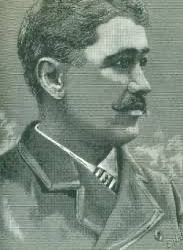
John Quincy Adams (May 4, 1848 - September 4, 1922) Educator, newspaper publisher, and politician, he is known as the editor of the Western Appeal/The Appeal of St. Paul, transformed it into a national newspaper with offices in Minneapolis, Chicago, St. Louis, Dallas, and DC and he changed its name to The Appeal.
He was born free in Louisville to the Reverend Henry and Margaret Priscilla Adams (née Corbin). He was one of four children. He graduated from Oberlin College. He moved to Arkansas where he taught in schools in Little Rock before taking a position assisting his uncle, who was Arkansas’ Superintendent of Public Instruction. He was involved in Republican Party politics and served as an Engrossing Clerk in the state senate and as Deputy Commissioner of Public Works. He served as a result of Ganger and Storekeeper in the US Revenue Service. He and his brother Cyrus Field Adams published the weekly Louisville Bulletin. He was responsible for convening the first Colored National Press Convention and was elected its first president.
He partnered with Fredrick L. McGhee. The two were instrumental in initiating legal challenges to racial discrimination in Minnesota and in passing legislation guaranteeing civil rights. He and McGhee were founders of Minnesota’s Protective and Industrial League, which was affiliated with the Afro-American League and the Afro-American Council.
He was a consistent supporter of Booker T. Washington and the Tuskegee Model at the conventions of the Afro-American Council. That support damaged his reputation within that group allying itself to the Niagara Movement and the NAACP.
He married Ella Bell Smith (1892) and they had four children. He was one of the last post-reconstruction editors who survived into the twentieth century. #africanhistory365 #africanexcellence
1 note
·
View note
Text



just playin'
#liberty's kids#my art#amrev#american revolution#Margaret Corbin#Captain Molly#Molly Pitcher#Camp Followers#continental army#continental artillery#digital art#18th century
41 notes
·
View notes
Text










City on a Hill - Showtime - June 16, 2019 - September 25, 2022
Crime Drama (26 episodes)
Running Time: 60 minutes
Stars:
Kevin Bacon as Retired FBI Agent John "Jackie" Rohr
Aldis Hodge as Assistant District Attorney DeCourcy Ward
Jonathan Tucker as Francis "Frankie" Ryan
Mark O'Brien as James "Jimmy" Ryan (Season 1-2)
Lauren E. Banks as Siobhan Quay
Amanda Clayton as Catherine "Cathy" Ryan
Jere Shea as Massachusetts State Police Sergeant Hank Signa
Kevin Chapman as Boston P.D. Detective J.R. "Dickie" Minogue
Jill Hennessy as Jennifer "Jenny" Rohr
Matthew Del Negro as Boston P.D. Detective Chris Caysen
Recurring:
Cathy Moriarty as Dottie Ryan
Rory Culkin as Clay Roach
Kevin Dunn as District Attorney Nathan Rey
Vincent Elbaz as Boston Police Officer Hugo Rhys
Zoe Margaret Colletti (Season 1) and Lucia Ryan (Season 2) as Benedetta "Benny" Rohr
Mark Ryder as Father Diarmuid Doyle
Sarah Shahi as Rachel Benham
Jimmy Cummings as Tommy Hayes
Georgina Reilly as Corie Struthers
James Remar as Richard "Richy" Ryan
Gloria Reuben as Eloise Hastings
Kathryn Erbe as Sue Stanton
Charles Brice as Louie Ward
Ernie Hudson as Franklin Ward
Corbin Bernsen as Sinclair Dryden
Joanne Kelly as Letitia Dryden
Michael O'Keefe as Salvy Clasby
Seth Gilliam as Reverend Jasper Fields
Lee Tergesen as Vito "The Pig" Lupo
Amr Elsheikh as Moustafa Mody
Gary Perez as Felix Knight
#City on a Hill#TV#Showtime#Crime Drama#2000's#Kevin Bacon#Aldis Hodge#Jonathan Tucker#Mark O'Brien#Jill Hennessy#Lauren E. Banks#Amanda Clayton
3 notes
·
View notes
Text
meanwhile, some quotes about the material:
The "musical within a musical" is about a ramshackle theater troupe haphazardly putting on a show destined for Broadway in exchange for doing chores around the farm. People fall in and out of love throughout the process, all while the city folk comically struggle with the country life. Emmy-winning writer Cheri Steinkellner was given one mandate, however: "No tractor," she laughed on the phone just weeks before the show was set to begin previews. "They were adamant about that. And there's a tractor in the movie. There's a tractor in almost every scene. It's in many ways about a tractor. But I was told absolutely no tractor." [...] "We're all working on this like we're on an actual summer stock schedule. Art imitates life imitates art. It's just go, go, go. And I couldn't be prouder of our cast, and our Jane and Joe," Steinkellner, who is also a Golden Globe winner, said. Her writing partner also happens to be her husband Bill. "Our 'Summer Stock' is more 'inspired by' than adaptation. There are four songs included from the original film that you can't not do. But the new songs are the best of the old songs. The secret sauce was the great American Songbook." She said "It Had To Be You" is one of the classics audiences can expect.
[source: ‘High School Musical’s’ Corbin Bleu makes his Goodspeed debut in ‘Summer Stock’]
So, how different is the musical Summer Stock from the movie? It feels like a whole new animal, even though we’ve borrowed some elements from the movie. It is still, first and foremost, a love letter to the theater; it’s about this group of players who come to a farm to put on a show. So many numbers are how they get into farming through performance! We also still focus on how Joe and his partner Phil [played by Gilbert L. Bailey II] fight to get the show on its feet, and how Joe helps his eventual love interest Jane [played by Danielle Wade] find her inner performer. But a lot has changed from the film, including some of the relationships. We have a brilliant new writer, Cheri Steinkellner, who has dropped in a lot of nods to why we love musical theater. We have Veanne Cox as Orville’s mother, who is the new “villain” of the piece. And we’ve added a lot of music, such as “It Had to Be You” and “It’s Only a Paper Moon,” and we’ve switched around who’s singing some of the film’s songs, such as “Dig, Dig, Dig” and “Happy Harvest.” But the most important thing is that while we’re still in the late 1940s, there are two Black actors playing the male leads – me and Gilbert Bailey as Phil – and it is definitely not color-blind casting; it’s color-conscious. That means we’re dealing with an interracial love affair, for instance. The racial element is an additional driving force, which I think is necessary, but the main story isn’t about the struggle for racial equality. In the end, it’s still a feel-good MGM-like affair. You’ve previously stepped into the figurative shoes of Gene Kelly, who originated the role of Joe in the movie, as well as Fred Astaire. How does that feel? I am always aware these golden age icons from MGM have such a specific style and that they make what they do look easy. Of course, I want to bring that to Joe. But in the tap dance sequence, for instance, we also have a bit of Gregory Hines, even though I’m no Gregory Hines. And at the end of the day, it’s me on stage, and I work hardest on finding my own characterization of these roles. This is your first time working with Donna Feore, who is one of Canada’s leading directors and choreographers. Tell me about your experience with her? Donna is wonderful to work with, both as director and choreographer. I think the best thing about her handling both roles is we don’t have to get everyone on the same page, because she is the same page. She’s also really hands-on with the music; she fought to have a drummer in the room during rehearsals so we could find those beats while we created the choreography, not just insert them later. As she directs, she considers the movement of every scene, but also the story that we’re telling through that movement! It’s not movement for movement’s sake, and I appreciate that! Goodspeed isn’t the easiest place to do a dance-oriented show, is it? Yes, we’re dealing with the confines of a very small stage, it’s like dancing on a Chiclet. I am so impressed how vibrantly our cast can move on this stage. We’re on top of each other! I think we’d look great on a bigger stage, which is just one reason why everyone is focused on moving this show to New York.
[source: Interview: Corbin Bleu Talks About the New Musical Summer Stock and the Fourth Season of HSMTMTS]
“Summer Stock” is right in Corbin Bleu’s wheelhouse. “I feel at home on the stage,” he said. An actor, singer and dancer his whole life, Bleu is appearing in the upcoming stage adaptation of the Hollywood musical beginning July 7 at the Goodspeed Opera House. “I established myself in this particular genre, doing shows associated with Gene Kelly or Fred Astaire,” he said. “I am a bit of an old soul. This is what my voice naturally goes to.” The “High School Musical” star is playing Joe Ross, one of a troupe of actors that descends on a small farming town to turn an old barn into a theater. It appears he was born to play the role originated by Kelly on the big screen. “I grew up as a theater kid,” Bleu said. “I grew up watching old MGM movies. I was a theater nerd and a musical theater fan. My dad kept a storage unit of stuff from our childhood, and he found an old school paper from when I was in elementary school where I’m dreaming of performing in musicals.” [...] Of the four shows, “Holiday Inn” is most similar to “Summer Stock,” which was also adapted from a movie . “Holiday Inn” was a fairly close reworking of the film, but “Summer Stock” takes a few more liberties. “It’s not the exact same story,” Bleu said. “When I watch the movie, I think it could definitely use some updates.” Those updates include a multi-racial cast. “Let’s not skirt the obvious,” Bleu said. “I’m a Black guy doing characters traditionally played by white men, doing things Black men weren’t traditionally able to do easily at the time these shows take place.” [...] “Some parts of the book are still in process,” Bleu said. “Cheri is in the room with us at rehearsals. We want this to feel modern, but we don’t want to shoehorn anything in. “I was also part of the workshop we did in New York a month and a half ago,” he added. “I’m loving seeing it and I’m loving being a part of it. We know this genre. It’s a feel-good musical comedy, a big song and dance show.” Though there is a lot that has been rethought when reshaping “Summer Stock” for the 21st-century stage, those who know it as a Gene Kelly movie will have plenty to latch onto. “We are completely paying our homage to Gene,” Bleu said. “I am not Gene, but I do have a natural tendency to lean into that style. Gregory Hines is also a big inspiration. There’s tap dancing in this. There’s a whole Lindy Hop number. There are a lot of very large dance numbers.”
[source: ‘High School Musical’ star Corbin Bleu is rethinking ‘Summer Stock’ at the Goodspeed Opera House]
#already able to guess abt the ''inspired by'' more than [trying for a peak one to one adaptation] and gilbert as phil (as herb in the film)#and vienna as margaret wingate as orville's mother....#doing the like look up & kinda combine nodding and a head tilt abt [moving the show to new york] didn't occur to me but like oh yeah ig#hand on my shoulder like even in looking through one actor's relatively recent oeuvre you See the productions' iterations travel....#hand back on my own shoulder like counterpoint i don't know or much notice or extrapolate shit lol. unless? when i do#you gotta love the meta show bound for nyc within a show about what it takes putting on a show etc etc what all & have you#summer stock#implicitly:#will roland#explicitly a lot re:#corbin bleu#for everyone keeping up with the corbinews / corbin bleuws. got htm:tm:ts in that lol didn't know he was Fictional Corbin in there...#this is just like when corbin bleu went to see the show ft. will roland on bway with a show within its show mentioning going to bway fr...#oh i'd also thought about the tractor issue and figured that truly might be a bit much for a stage production#there's a lot you can move around / evolve / excise / add in the film's material. including the parts about the tractor i'm very sure#even though that's the main character's big Actually Nice moment lmao. i assume an inspired change is that he's Overall actually nice#remembering that fun fact of bmc's bway stage actually being shallower than its off-bway dimensions
2 notes
·
View notes
Text
Dorris Daniel Obituary
DORRIS CALDWELL “JIM” DANIEL, JR., born in Corbin, KY on March 6, 1935, died 30 June 2024 in Murfreesboro, TN. He was preceded in death by his parents, Dorris “Scott” Daniel, Sr., and Margaret Shelley Daniel, as well as many cousins, aunts and uncles. He is survived by his wife, the former Susan Garretson. They married 61 years ago in Lynchburg, VA. They have lived in Murfreesboro since 1974. He…

View On WordPress
0 notes
Text
Sanity Percentages of Liberty’s Kids Characters:
Everyone’s mental state is slowly, but surely deteriorating-
James Hiller: 95%
Sarah Phillips: 98%
Henri LeFevbre: 89%
Moses Franklin: 87%
Dr. Benjamin Franklin: 83%
John Adams: 79%
Thomas Jefferson: 82%
Abigail Adams: 74%
George Washington: 65%
Marquis de Lafayette: 71%
Alexander Hamilton: 69%
John Laurens: 63%
Benedict Arnold: 54%
Margaret “Peggy” Shippen: 76%
Ethan Allen: 56%
Margaret “Molly” Corbin: 79%
Thomas Paine: 41%
Lady Phillips: 67%
Major Phillips: 54%
6 notes
·
View notes
Text

https://archiveofourown.org/works/51114355/chapters/165570961
*breaks down your door* ALONG THE NORTHERN HEIGHTS: CHAPTER 9!! IT IS POSTED!!!
I apologize in advance for what had to be done...
#liberty's kids#my writing#Along The Northern Heights#ATNH#sarah phillips#james hiller#American Revolutionary War#Amrev#Margaret Corbin#Captain Molly
5 notes
·
View notes
Text
July 4th, 1776 marks the birth of this nation. America was the first country on earth that was created for the purpose of upholding mankind’s individual liberty and political freedom.
As we celebrate this momentous day, here are the stories of four women who contributed to the American Revolution.
Phillis Wheatley

The first published black author and the second women of any race or background to have published a book in America, Phillis Wheatley inspired the newly formed nation to keep up the good fight with the genius of her words.
Brought over to America as a slave at 7 years old, Phillis Wheatley was taught to read and write by the Wheatley family and her writings soon made her a celebrated figure during the American Revolution. Half the battle of war is won in the mind. In the case of Phillis Wheatley, her inspirational poems and beautiful elegies sustained the morale of American soldiers throughout the dreary and seemingly futile battle of the Revolutionary War.
Phillis Wheatley inspired the newly formed nation to keep up the good fight with the genius of her words.
The American Revolutionary troops knew they were facing impossible odds because they were taking on the mightiest power of that time — the British Empire. Worst too, was how they were ill-equipped to oppose the British since the war wasn’t financed by a government, but rather a group of individuals who believed in the cause for freedom.
Phillis Wheatley gave them the hope and fuel to keep fighting the good fight with her poems about patriotism, battles, and the greatness of America. While it was Thomas Paine who wrote the pamphlet that roused Americans to action, it was Phillis Wheatley who kept the spirit of the revolution alive when the war was in its darkest hour.
She did what a woman does best — inspire a man to fight for a better future because he is shown why it’s worth fighting for.
Abigail Adams

The wife of John Adams and mother of John Quincy Adams, Abigail Adams played a vital role in the American Revolution. She was just the woman a man like John Adams needed and deserved.
While John Adams was sent off to Paris to secure France as an ally in the Revolutionary War, Abigail Adams diligently corresponded and wrote letters to her husband to keep his morale high and reminded him of the good work he was doing. Her letters also helped John Adams to visualize the realities of war as she updated him on the family’s daily struggles.
His absence was heartbreaking for her (we can read this in their letters to each other) because she empathized, admired, and loved him deeply. But she recognized how her husband was fighting for the freedom of mankind, a value she shared with him. Hence she focused on doing everything she could to support him in the fight.
What was incredibly admirable about the Adams is how they lived their life guided by principles, morals, and virtues. For example, they had never owned any slaves because slavery was against their principles.
What was incredibly admirable about the Adams is how they lived their life guided by principles, morals, and virtues.
John Adams was one of the greatest of men, and Abigail Adams was his intellectual and moral equal. She was his dearest friend, and to no one was he more devoted to than his wife. Without Abigail in his life, John would’ve had to face the ordeal of fighting alone.
Margaret Corbin

Margaret Corbin’s life was filled with hardship. When she was five years old, her home was attacked by hostile natives. Her father was killed and her mother was taken away, never to be seen again. She and her brother went to live with her uncle after that.
After marriage, she followed her husband (John Corbin), a canon artilleryman to the battlefield. Like many wives (and children) who followed their army spouse or parent from camp to camp, she assisted in the war effort with her services.
These soldier wives sewed, washed, nursed and cooked for the camp. Most notably, the bravest of these women like Margaret Corbin placed themselves in the front lines by bringing water to help the soldiers to cool overheated cannons during battle.
It was in one of these battles when Margaret Corbin saw her husband killed, and in the heat of battle, took his place in manning his cannon in order to keep firing at the enemy. She had been at his side the entire time and paid attention to how the cannon was operated.
It was in one of these battles when Margaret Corbin saw her husband killed, and in the heat of battle, took his place in manning his cannon...
She was seriously injured in the battle and was left for dead. Her wounds left her permanently disabled. The Continental Congress, recognizing her service, awarded her with a lifelong pension and she became the first woman to receive a military pension.
Deborah Sampson

When we think of women disguising themselves as male soldiers in order to go to war, Disney’s Mulan immediately comes to mind. The American Revolution also has an example of a woman disguising herself as a man to fight for freedom — in the case of Deborah Sampson.
Like Margaret Corbin, Deborah Sampson grew up in hardship. After being orphaned as a child, she was sent into indentured servitude to pay off her mother’s debt. But hardship didn’t stop her from finding ways to learn how to read and write. Her brilliance allowed her to earn a living as a teacher after her indentured contract was over.
Inspired by the ideas of liberty and freedom, she enlisted in the Continental Army so she could join the fight for American independence. She even enlisted in the elite unit of the military. Her disguise was successful since no one would think to look for a woman among soldiers who were specially chosen for their above average size and superior physical ability.
Inspired by the ideas of liberty and freedom, she enlisted in the Continental Army so she could join the fight for American independence.
Shot in battle, and worried that her identity would be discovered, she attended her wounds and removed a bullet from her leg with a penknife and sewing needle. Fortunately for her, when the army found out she was a woman, she was honorably discharged and her husband was the only man to receive a widower’s pension from the Revolutionary War.
Closing thoughts
These four women were just a few of many more women who contributed to the American Revolution. They were our Founding Mothers, working hand in hand with the Founding Fathers to secure a future of freedom and liberty for all.
The American Revolution is one of the most momentous turning points in the world’s history. Prior to the founding of America, subjects lived under the tyranny of kings and emperors. The ideas of individual rights and liberty were practically non-existent in much of human history. We today, enjoy our freedom because these men and women fought for these rights. Let us not forget their names and contribution to the cause of human freedom.
#american revolution#history#USA#the united states of america#america#phyllis wheatley#abigail adams#margaret corbin#deborah sampson
4 notes
·
View notes